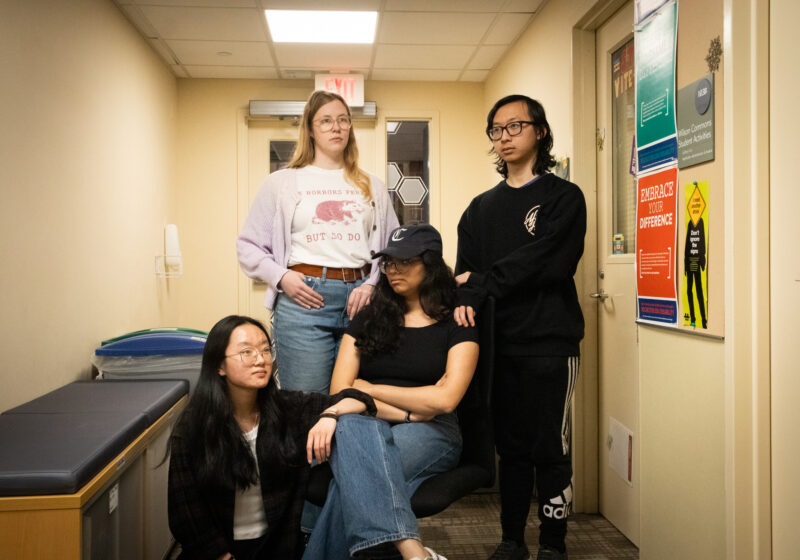Imagine a live performance that allows you to choose your own adventure and see different perspectives on the same story. An immersive show with beautiful music, vibrant acting, and storytelling. What sets it apart is the freedom the audience holds to move around the room and select which characters to follow as the story is told. This spectacular show was The String Quartet Theatre, co-created by Evan Meccarello, the production’s music director, and Tanner Efinger, the writer and stage director.
My recent experience at the Fringe Festival, where I witnessed the String Quartet Theatre in action, was nothing short of magical. The performance was a collaboration of acting, storytelling, and music-making. Despite the traditional set-up of a string quartet with two violins, a viola, and a cello, the performance was anything but traditional.
When my friends and I walked into the theater, the usher handed us a program and informed us that we could sit anywhere in the auditorium. We were intrigued, and when we entered the auditorium, we noticed some people sitting on the stage. Hesitant at first, we debated whether to sit up there under the bright light. “Why not?” we decided, and nervously walked on. Cool shades of blues, purples, and greens shone on our faces. There was suspense amongst the crowd. The only description of the show we read online when buying the tickets used words like “experimental” or “immersive.” There was a droning sound, people were whispering, and programs were shuffling. Finally, the quartet emerged from the back of the theater, plucking their strings, improvising, and playing short melodies. The musicians wandered around the theater, playing an assortment of soft harmonies. One by one, they found their way to the stage to play a short, beautiful piece together.
As the show progressed, the musicians began to act. The performance unfolded, telling a story of a couple falling in and out of love, dealing with loss, and moving on from a relationship. As actors left the stage, the audience was invited to follow them into different rooms of the building. You could hear “his” or “her” point of view, allowing you to see different sides of the story. What an extraordinary thing to see done live. This intriguing aspect of the show might invite listeners to attend multiple nights to hear a different story every time.
I spoke with Meccarello, who gave me more insight into how he and his team put the production together. Meccarello said he was interested in giving the audience some freedom to move around the space, which is such a different concept in the classical music world.
“I was aiming for audiences who like classical music, but also aiming for audiences that don’t know classical music but like theater,” he said. This idea draws in a more extensive and diverse audience, which is vital for an evolving music world. Lastly, Meccarello wanted music mainly from living composers. It was a diverse selection of pieces, from Tessa Larks “Jig and Pop” for solo violin to more traditional works like “Borodin String Quartet No. 2.” For the performance, Meccarello even commissioned a piece from a graduate of Eastman School of Music, Sean Calhoun, ’19.
The whole performance showed the possibilities of music performance. Music can be diverse, ranging from the New York Philharmonic to a Taylor Swift concert. Each of these performances brings in two very different kinds of people. Why can’t aspects of these concerts fall under the same roof? Why can’t we play a pop song and an orchestra piece in the same show or have theater mixed with classical music? The String Quartet Theatre reaches a crowd different from an orchestra or pop music concert, showing that there can be a blend of both.
There needs to be more options. We need more music productions that break the fourth wall between the audience and the performers, more collaboration of the arts, and more beautiful and strange art in this world. The String Quartet Theatre encompassed all of these aspects.



